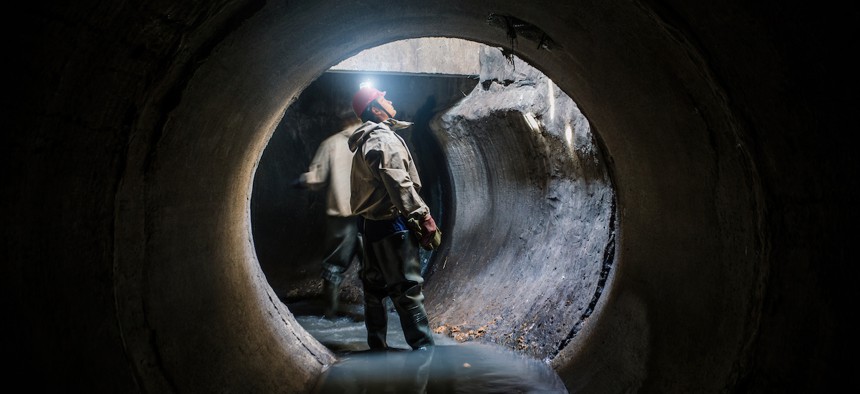Sewage surveillance spots respiratory viruses

Vladimir Zapletin/Getty Images
Researchers identified RNA common to a number of respiratory viruses in local wastewater and found it lined up with clinical data on relative infection rates.
The COVID pandemic brought sewage surveillance to the public eye.
Traditionally, public health officials track the way an illness circulates through a community from weekly reports from sentinel laboratories responsible for early detection of biological agents. Those labs analyze samples from the critically ill, but it can take weeks for a potential threat agent to be identified and added into public health databases, slowing effective response.
Thanks to COVID wastewater monitoring, which tested water flowing from a community’s toilets, showers and sinks for signs of the coronavirus, public health officials have a reliable source for information about a community’s COVID rates, especially now that most testing is conducted at home.
Now, researchers from Stanford University want to identify even more viruses in wastewater. In collaboration with researchers from Emory University and Verily Life Sciences, a team led by Alexandria Boehm, professor of civil and environmental engineering at Stanford Engineering and the Stanford Doerr School of Sustainability, has analyzed wastewater from the Santa Clara, California, sewer system. They have collected data on a number of respiratory viruses, most of which had never been monitored in wastewater.
“We found that concentrations of RNA, the building block of virus genomes, from influenza A and B, RSV, rhinovirus, parainfluenza, metapneumovirus and seasonal coronaviruses in wastewater follow the trends also observed in the clinical data from sentinel laboratories,” Boehm told Stanford Engineering Magazine.
The viruses Boehm’s team spotted in local wastewater lined up with California’s clinical data on relative infection rates.
“This suggests that wastewater can be used to understand the circulation of these respiratory viruses at a more local scale than at the state level with the clinical information,” Boehm said. “In addition, results on virus circulation can be real time.”
Boehm’s group already had sampling and testing infrastructure in place, so testing for different viruses was straightforward. Researchers simply took the same samples and ran different tests to identify the presence of other respiratory viruses.
Another benefit of wastewater testing is that the data can be available within 24 hours of collecting a sample, which would allow public health departments to get ahead of a contagious infection. They could preemptively run education and vaccination campaigns and let vulnerable individuals know how they can avoid catching the virus.
The real-time data could also help public health facilities with testing and treatments. If no flu is reported in the area, flu tests probably do not need to be regularly conducted. Hospitals can use the information to stock up on remedies if they anticipate an outbreak.
Boehm said she hopes this Santa Clara-based study will motivate more researchers to look for these infectious disease targets in their local wastewater. “I think it’s really important to show that this works in more than one location, which I totally expect it will,” she said.
“One of the most exciting things about wastewater monitoring is how quickly we can bring our innovations into practice,” said Marlene Wolfe, co-author on the study and assistant professor of environmental health at Emory University. “We are already working with utilities and public health departments around the country, [so] we can introduce new tests very quickly once we have the evidence that the wastewater data reflects community levels of disease.”
The research team is already studying the feasibility of monitoring more infectious disease viruses in wastewater. They are also working closely with public health officials to study not just viruses, but also infectious diseases caused by fungi and bacteria, Boehm said. “We just need to keep doing research and exploring how far we can take wastewater surveillance for infectious disease targets,” she added.
“We are gathering evidence that wastewater can be useful for many infectious disease targets beyond COVID-19,” Boehm said. “And that it’s a really valuable resource for understanding community health.”
The findings were published in the March 22 issue of The Lancet Microbe.






